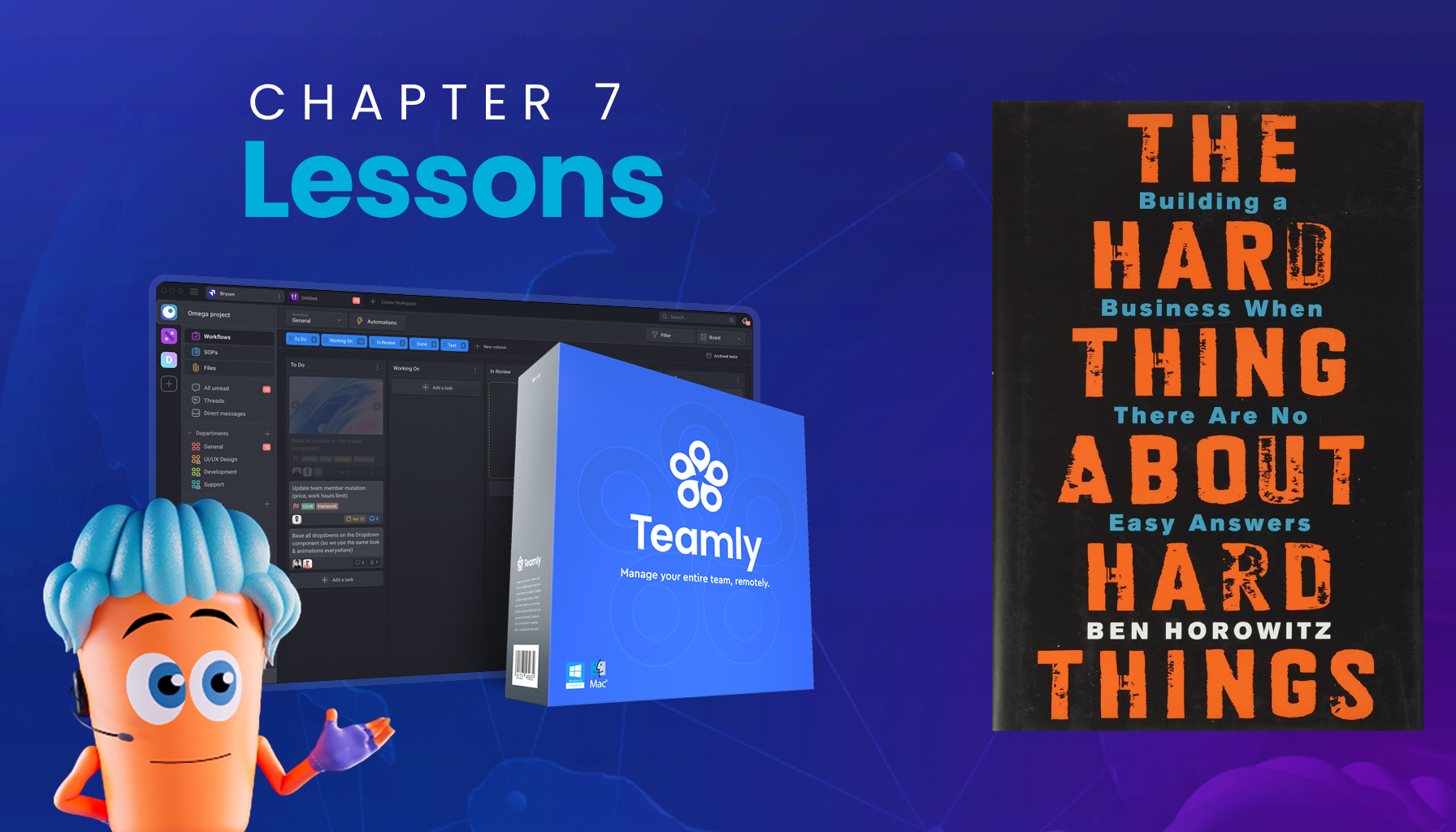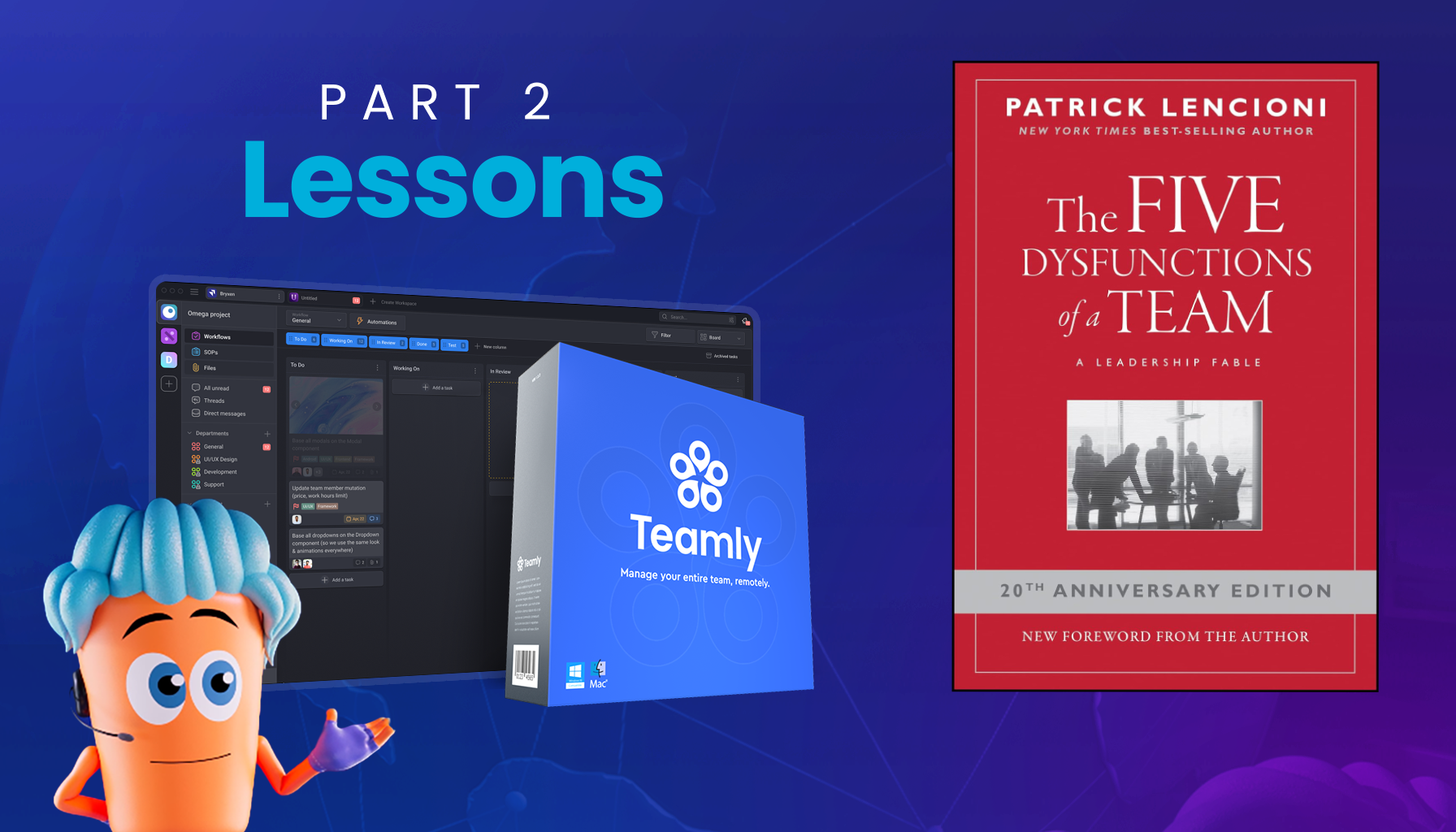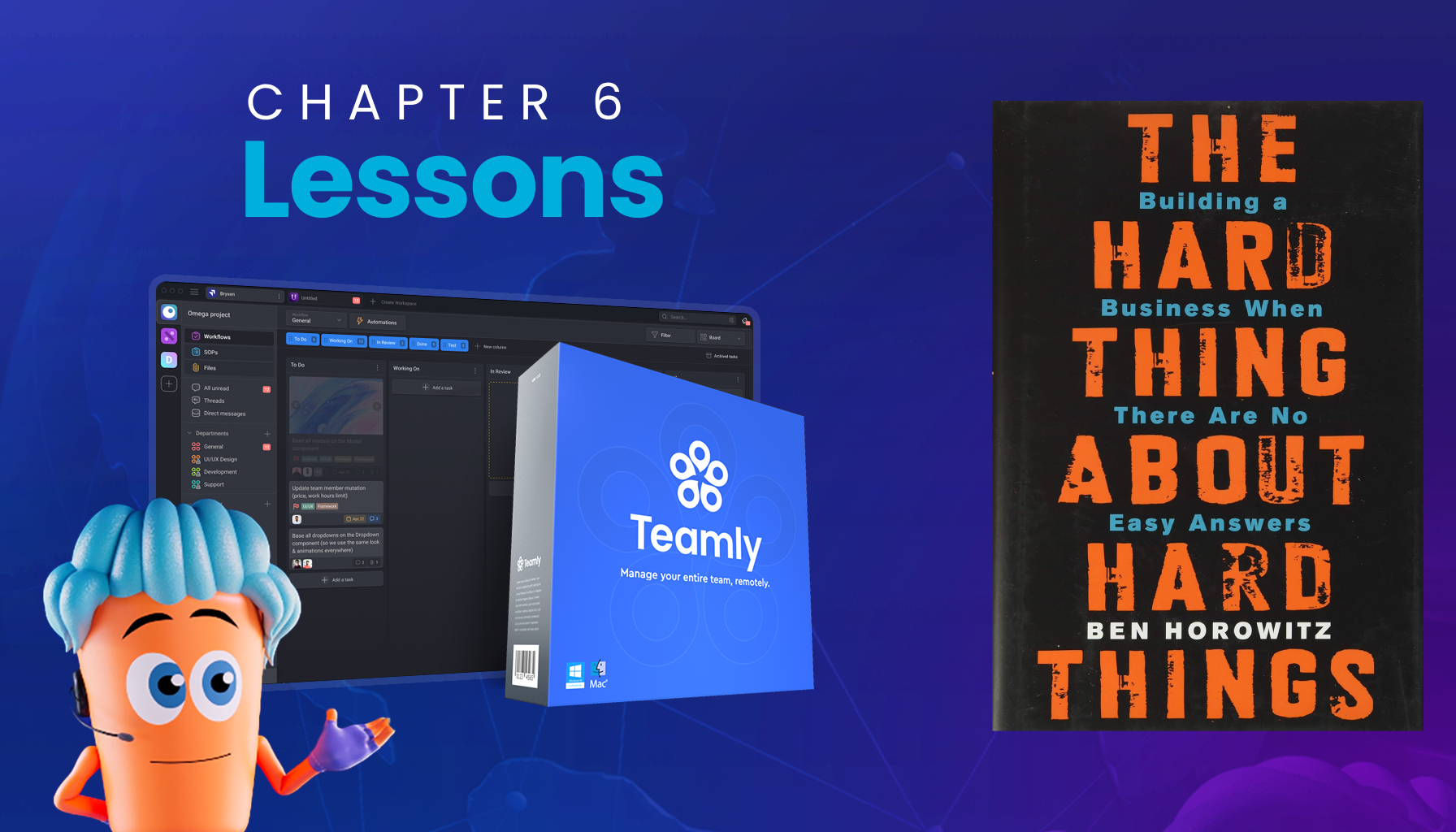
Click the button to start reading
Lessons from “The Hard Thing About Hard Things” by Ben Horowitz – Chapter 7
Ben Horowitz’s The Hard Thing About Hard Things: Building a Business When There Are No Easy Answers is a must-read for any aspiring entrepreneur or leader navigating the unpredictable world of business.
In Chapter 7, Horowitz dives deep into the nuances of leadership, highlighting the unique challenges faced by CEOs.
He explores what it takes to be effective in both peacetime and wartime, the difference between managing in calm versus crisis, and how to make difficult decisions that will shape the company’s future.
From evaluating CEOs to ensuring the company is functioning at its highest capacity, this chapter is packed with valuable insights for leaders at any stage.
Let’s explore some of the standout lessons from this chapter…

Peacetime CEO vs. Wartime CEO
One of the major distinctions Horowitz draws in this chapter is between a “peacetime CEO” and a “wartime CEO.” Peacetime CEOs are focused on scaling, innovation, and maximizing opportunities when the company is flourishing.
In contrast, wartime CEOs are laser-focused on survival, pushing the company through crisis situations.
- Peacetime CEO focuses on:
- Maximizing growth and broadening opportunities
- Encouraging creativity and contribution
- Building a scalable, high-volume recruiting machine
- Wartime CEO focuses on:
- Surviving existential threats
- Tight execution with strict adherence to the mission
- Making decisions to win at all costs, even if it means breaking protocol

The Importance of Knowing What to Do
When evaluating CEOs, Horowitz emphasizes that the most important factor is whether they know what to do.
This means understanding every facet of the company and making decisions with incomplete information—something every CEO will inevitably face.
- Key areas of decision-making include:
- Product strategy and marketing
- Personnel management
- Goal setting and scaling operations
At the macro level, it is critical for a CEO to set the right strategy and tell the company’s story.
Horowitz points out that in many companies, if the story is unclear, employees and investors may question the direction. A well-defined story aligns everyone in the organization toward common goals.

How a CEO Can Execute Vision and Get Things Done
Even if a CEO knows what to do, they also need to be able to get the company to execute on that vision.
Horowitz stresses that execution is as important as vision. A great CEO will ensure that the company can rally around their ideas and carry them out effectively.
To execute successfully, a CEO must:
- Build a world-class team. The CEO is responsible for ensuring that the best talent is in the right positions. This includes hiring, training, and motivating employees to contribute their best work.
- Ensure employees can get things done easily. In a well-run organization, employees are empowered and supported by systems that allow them to focus on their work without being bogged down by politics or inefficient processes. Poorly run companies force their employees to spend valuable time battling bureaucracy.

Setting Clear Objectives and Achieving Results
Horowitz also emphasizes that setting objectives and measuring results is a vital part of leading a company. When setting objectives, the CEO should aim for clarity and alignment, but avoid setting goals artificially high or too low.
- Match objectives to the company’s real opportunities. Avoid setting goals that make sense for someone else’s company. Every company’s context is different, and objectives should reflect that.
- Reinforce objectives with systems and processes. A clear system ensures employees understand how their contributions drive the company’s overall goals.
Great CEOs also understand that objectives are just one part of the equation—measuring actual results is equally important. Netflix’s Reed Hastings, for example, built systems that empowered employees to execute effectively while holding them accountable for results.

Making Difficult Decisions Based on Incomplete Information
One of the most challenging aspects of being a CEO is the need to make critical decisions without having all the information. In business, decisions rarely come with 100% certainty.
Horowitz argues that the ability to bet the company’s future on a decision, even when uncertain, is the mark of a strong CEO.
- What are competitors likely to do?
- What are the company’s capabilities and how can they be maximized?
- What are the financial risks?
- How will employees respond?
By systematically gathering information and continually assessing the company’s position, a CEO can make informed decisions even in the face of uncertainty. Courage and confidence play a huge role in decision-making, and successful CEOs know when to trust their instincts.
Measuring CEO Success: Did They Achieve the Desired Results?
Finally, the ultimate test for a CEO is whether they achieve the desired results. Horowitz reminds us that the results against objectives are often a lagging indicator, and that success should be evaluated based on how the CEO positioned the company for long-term growth.
- Correct objectives are key. Setting the right goals from the outset gives the CEO and the company a clear path to success. Misaligned objectives can give the illusion of failure or success without a true understanding of progress.
- Results vs. expectations. Sometimes, results exceed even the most optimistic expectations. For example, Baidu’s IPO, led by CEO Robin Li, exceeded all expectations when the stock price jumped far beyond what was anticipated. However, Li knew that true success meant delivering long-term, sustainable results beyond that initial IPO.
Chapter 7 of The Hard Thing About Hard Things is filled with powerful lessons about leadership and decision-making.
Whether navigating peacetime growth or wartime crises, a CEO must adapt and lead their team with clarity, courage, and consistency. From setting clear objectives to building a high-performance team, the insights in this chapter provide a roadmap for anyone in a leadership role.
Want to dive deeper into these insights? Get your copy of The Hard Thing About Hard Things on Amazon here.
















